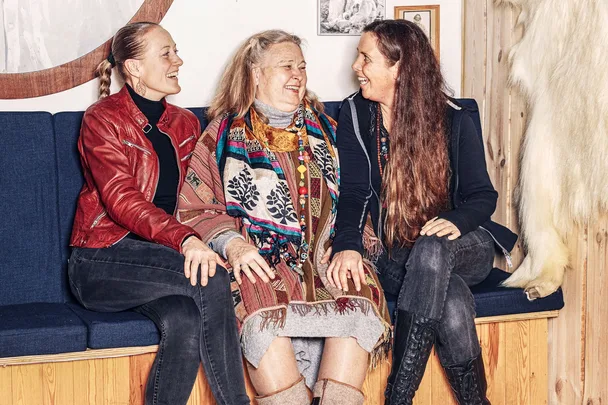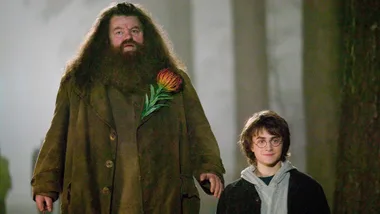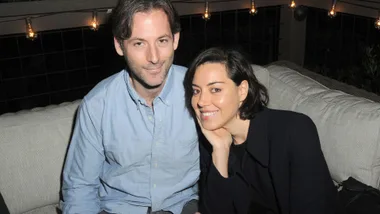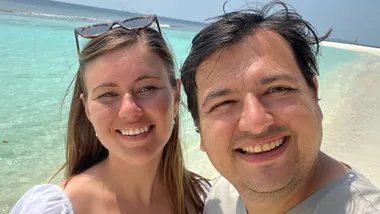Behind an unassuming gate in Copenhagen’s trendy Nyhavn district is a hidden, cobblestoned alleyway. Down the alleyway is a heavy wooden door flanked by a nautical compass coat of arms. Behind the door is the clubhouse of the most exclusive, invitation-only society in Europe: The Adventurers’ Club of Denmark.
Inside, a portrait of three Aboriginals from Central Australia hangs on the wall; the image shows an uncle dripping blood from his arm onto his nephew to give him strength during an initiation process. To the left is an image of a five-year-old Papua New Guinean girl with amulets around her neck including a dried human hand. In the corner is the skin of a polar bear, surrounded by spears, shields and arrows collected from tribes around the world. In the middle of the room is an enormous round table built from the wooden transport box that delivered an elephant to the Copenhagen Zoo. It’s carved with the names of the members of The Adventurers’ Club as a rite of passage. Well, the names of the male members…
The Adventurers’ Club was founded in 1938 by famous Danish explorer Peter Freuchen (a two-metre-tall hulk known as “the most interesting man in the world”) and his wife Magdalene, an actress who travelled through Greenland, Mexico, the US and Russia. Of the 10 founding members, two were women: Magdalene and Estrid Bannister Good, who explored China during the civil war, visited Japan during an earthquake and ventured to India, Africa, Sumatra and Malaysia. Twenty years after forming, the men kicked the women out of the club (rumour has it because their wives at home weren’t happy with them fraternising with other women at the clubhouse). Undeterred, the women formed their own club, The Women Adventurers’ Club of Denmark, a
secret society for female explorers, globetrotters and daredevils. Today the group has more than 60 members, who meet once a month for dinner and important discussions at the clubhouse, which they rent from the blokes for the occasion.
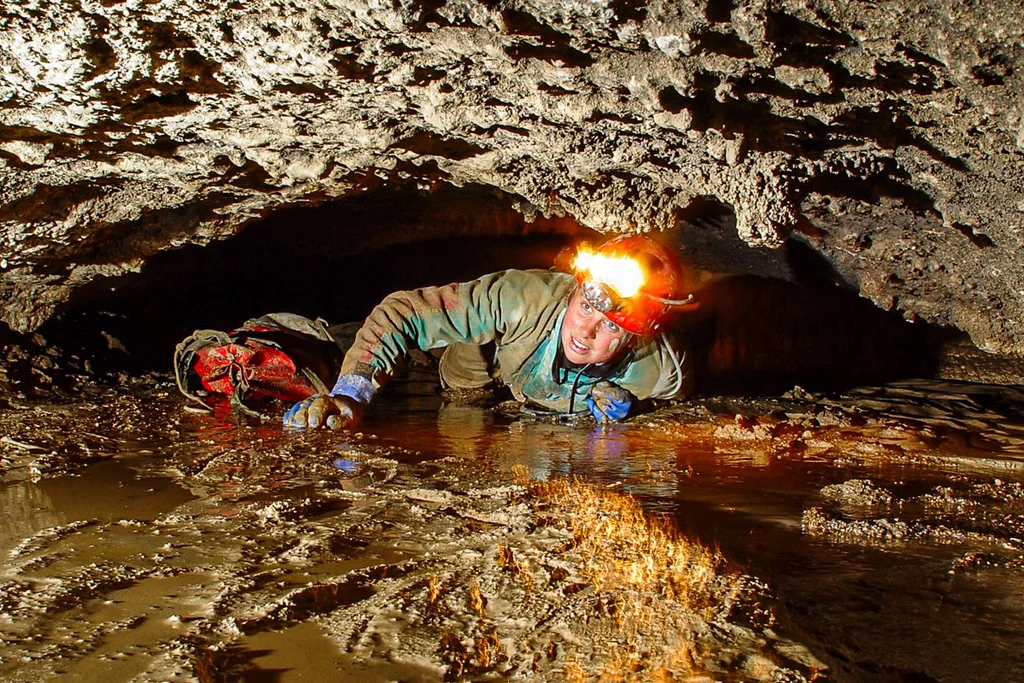
Adventurer Louise Korsgaard deep underground
Sitting at the great wooden tableat The Adventurers’ Club, Louise Korsgaard feels at home. “There’s a special energy in the room that makes me forget the slightly boring life [at home with the kids in Copenhagen],” says the mother of two with a PhD in hydrological modelling, who has spent her impressive career exploring caves across the globe – including discovering India’s longest cave system. Louise, 45, joined the club last year after doing the required three-minute teaser talk, followed by a 45-minute presentation wearing her caving helmet and a pretty summer dress. She opened her speech with her favourite underground anecdote. After falling in love with cave exploration aged 14 when she first visited Gunung Mulu National Park in Borneo, she returned to the system when she was 18 with her sister, 17. They signed up for an adventure cave tour with a guide, where you enter through one entrance and come out at another. When the Danish sisters hadn’t exited after 10 hours, the tour company headquarters raised the alarm. “Our guide had gotten lost. After eight hours of trying to find the exit, we ran out of light in our headlamps. We had no food or water. The guide told us to sit down and wait while he went for help. We sat there in total darkness and sang Christmas carols to keep ourselves entertained,” says Louise, who was finally rescued after 17 hours. Was she terrified? “No, not at all. I was confident someone would find us.” As for the guide, “He no longer works there.”
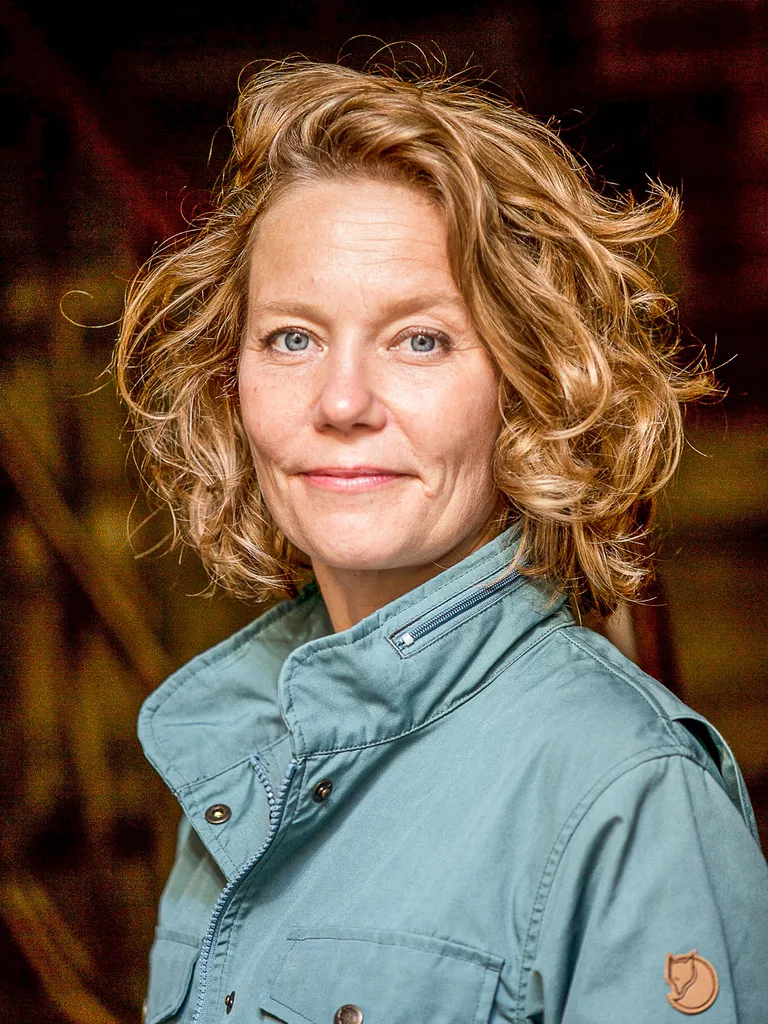
It’s a ripper of a story, but you need more than just a good yarn to score an invite to the selective club. You can only apply for membership at the invitation of the club’s admissions committee. The rules dictate that you need to have had unusual experiences in unusual circumstances (preferably abroad). You also need a curious mind and a passionate heart, says Cecilia Vanman, a marine mammal biologist, photojournalist and explorer who joined the club in 2011. Unlike the male division of the club, who have a top-secret initiation ceremony, the women’s club is more, well, civilised. “We don’t cover anyone in tar and feathers,” jokes Cecilia, 48. “When you join, the chairwoman wears a special coat with all these amazing artefacts from around the world sewn onto it and we repeat the Women Adventurers’ Club oath, where we swear to live a life of adventure and share it with the world.”
Cecilia ticks all of the Adventurers’ Club boxes. In her past life as a shoe designer in London’s fashion district, Cecilia fell in love with scuba diving and left high heels to study a master’s degree in marine mammal science at Bangor University in Wales, graduating in 2005. She’s worked as a marine environment consultant ever since; leading expeditions in the arctic and antarctic, taking film crews to the great polar regions and even working with Leonardo DiCaprio on his environmental crusade. These icy wonderlands trump Leo when it comes to career highlights. “There’s a feeling of immense wilderness in the Arctic and Antarctic. It makes you feel so small because it’s controlling you. You can’t control it. You are at its mercy. I think that’s a very healthy thing to experience,” says Cecilia, before revealing her all-time favourite marine experience. “I was in a stationary Zodiac boat in Antarctica in 2017 when two humpback whales approached us and spent more than an hour with us. One looked me directly in the eye and it was the greatest moment I’ve ever had in the water.”
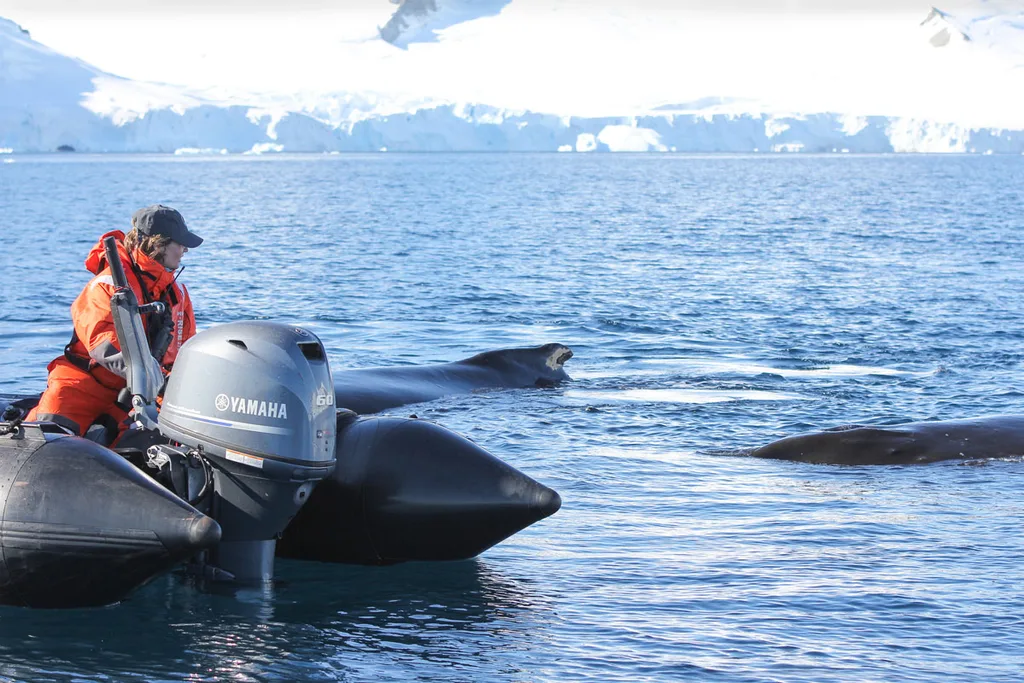
For every amazing encounter, there’s a testing challenge. Cecilia says the one time she really feared for her life was working on a ship off the coast of Africa. “We were under the constant threat of pirates,” she recalls. “It was one of the most difficult projects mentally because we lived in fear, even with armed guards. Our sister ship was attacked, but luckily nothing happened to us. We were still absolutely exhausted by the end of the three-month stint.”
Lotte Reiter, a conservation biologist and ecologist who, at 44, is one of the youngest members of The Women’s Adventurers’ Club, is acutely aware of the dangers female explorers face. “There will always be a greater risk of harassment for female travellers,” admits the blonde-haired, blue-eyed Dane, who quietly recalls an uncomfortable situation with a drunk man on a train in India that only ended when a local woman shamed him for being drunk. “You have to be careful and smart. When you’re in another country, you need to be aware of their culture, show respect and be friendly. It’s amazing how far you can get with a smile.” Lotte’s smile has taken her to more than 45 countries including Mauritius, Costa Rica, Seychelles and India, where she learnt water shiatsu, a therapeutic practice involving stretches, acupressure points and floating in warm water.
Benedicte Riis, 61, has also relied on her smile during her exotic journeys. Having lived in Bulgaria, South Africa and Brazil, she learnt early on how to deal with condescending men before she embarked on her greatest adventure: sailing from Cape Town to Rio de Janeiro in 2005 in her little sailboat, battling storms, sharks and chauvinists. “You need to have courage,” says the former teacher-turned-explorer-slash-musician. “There is always a lot of men in sailing. I remember preparing my boat in South Africa for a trip and being surrounded by a group of men watching with their arms folded across their chest. They asked if I had enough diesel, if I was sure I was strong enough for the trip. I proved I was strong enough later in the night at the bar over a few beers.”
It’s a sad reality that female adventurers feel the need to prove themselves. “When people picture an explorer, they think of Ernest Shackleton in the antarctic with a frozen beard. They don’t tend to think of women, but that’s changing,” says Cecilia, smashing stereotypes as she smashes ice sheets in the Arctic.

Despite the dated cliché of an explorer, Lotte thinks technology and TripAdvisor are making adventuring easier for women. In fact, the proportion of female thrill-seekers has skyrocketed: a recent Hostelworld study found the number of solo female travellers has increased by 88 per cent in the past four years. Solo female travellers now outnumber their male counterparts by nearly two to one. “More women are standing up, showing the way and not letting social constructs hold them back,” declares Louise, who’s travelling to Spain in a fortnight to explore a new set of caves.
With so many intrepid women traversing the globe, there’s more need than ever for The Women Adventurers’ Club of Denmark. Louise, Cecilia, Benedicte and Lotte all describe the club as their happy place, where they feel most like themselves –surrounded by their “sisterhood”. “At my first meeting, I looked in the eyes of the women and said, ‘This is my family’,” says Benedicte, adoringly.
The club contains priceless collective knowledge, from intel on the government in South Africa to the UN, Galápagos tortoises to weaving techniques in Japan. “But we all know something about adventure,” adds Benedicte. The women collect beads from their travels like stories, breaking a necklace from a remote community at the heavy wooden table and sharing the beads among the members to add to their own necklace. They wear the colourful adornments to meetings and on special occasions – like their annual picnic with the male adventurers, where the blokes light cigars and scoff at the women’s attempted no-smoking rule. All of the women agree: they’re glad their club is for women only. And even though their names aren’t carved into the clubhouse’s great round table, they’re slowly and surely being carved into the history books instead.
Cecilia’s single most important piece of wisdom for adventurous women is to “have a curious mind – and don’t be afraid to use it”. On that note, she really must finish our Skype conversation; she’s leaving for Antarctica tomorrow with an influential US think tank investigating climate change. Adventure awaits (and hopefully a whale or two).
This story originally appeared in the April 2020 issue of marie claire.
